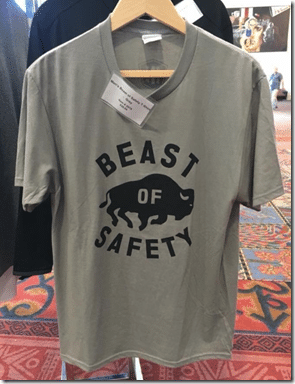Originally posted on June 8, 2018 @ 9:28 AM
Don’t Make Safety a Habit

The purpose of association is to create a social identity in belonging and delineation against those of an ‘out’ group. It doesn’t matter what the association is, diversity and difference are often made the enemies of association. Friendship and belonging in association is gained by agreement not by questioning. In Social Psychology the study or prejudice and ingroupness and outgroupness is the foundation of the discipline itself.
See further:
https://en.wikipedia.org/wiki/Ingroups_and_outgroups
http://web.comhem.se/u52239948/08/tajfel86.pdf
So here I was speaking to a safety group who pretty much started to marginalise me by the end of the first question. Unfortunately, because safety is so poorly educated, it doesn’t think too much about the by-products of its own semiotics. This is why Safety ends up with such contradictory and childish semiotics, slogans and mantras. Indeed, the evidence shows that Safety grabs for any trendy or faddish thing without thinking too much about its trajectory or trade-off.
I saw recently T-shirts selling at a safety conference with the words ‘Beast of Safety’. Of course this is a contradiction because the word ‘beast’ implies a dangerous animal. So in what way does the metaphor of ‘beast’ help the language of ‘safety’? It’s like saying ‘I’m dangerous about safety’, crazy. This is the kind of silly use of language that is common in the safety world. Like language about ‘resilience engineering’ or ‘safety 1 & 2’. In the end language has to make sense, apparently not in safety. This is why Safety is now caught in such phenomenal word gymnastics about zero with the trajectory in anti-learning and under reporting. I haven’t seen anywhere that zero actually means zero, most of the time these zero companies spend lots of energy redefining the word so it doesn’t mean zero!
A habit is something humans undertake without thinking, an automatic action that is not connected to rational logical consideration (https://en.wikipedia.org/wiki/Habit ). A habit is a fixed way of non-thinking and heuristical action that becomes automatic. Many habits can also become addictions. Something is defined as a habit when awareness of that action has disappeared. If one is aware of the performance of an action then it can’t be defined as a habit.
The last thing we need for safety is unthinking workers undertaking tasks by habit because when conditions change that habitual behaviour becomes dangerous. We need thinking conversational workers who can adapt when conditions change.
I know someone who was not taught well in how to use the brake when driving. For them the brake is either ‘on’ or ‘off’. So, when you drive with them be ready for a pretty jerky journey. Unfortunately, this practice is habitual, they are not even aware they are doing it and when you point out to them that they are doing it, nothing changes.
Jumping in and out of habit and addictions is not easy, habitual change requires intense awareness and psychological will in order to change. For addictions it requires even more intense and distressful cognitive dissonance. There are also good and bad habits that are determined by the ethic of the group.
Habits are not individual activities but are socially situated. Context provides the reward for many habits and shifting a habit often has a social consequence. Habits also ‘compete’ like values ‘compete’ and all habits imply an ethic and value.
Many of our habits come from the way we organise and the repetition of learnings in the formation of identity and belonging. In this way, smoking and excessive drinking become habits. The reason why it is hard to break many habits is because of power of social identity connected to them. So much so, when conditions change that last thing you need is your last safety habit.
We learned recently in the Grenfell Fire Inquiry that those who complied with instructions died (http://www.abc.net.au/news/2018-06-05/grenfell-residents-in-london-fire-wrongly-told-to-stay-inside/9833990 ). When the fire started people were advised to stay in their rooms according to safety policy. Those who thought for themselves and disobeyed safety policy lived. The last thing you should do is make safety a habit.



Do you have any thoughts? Please share them below